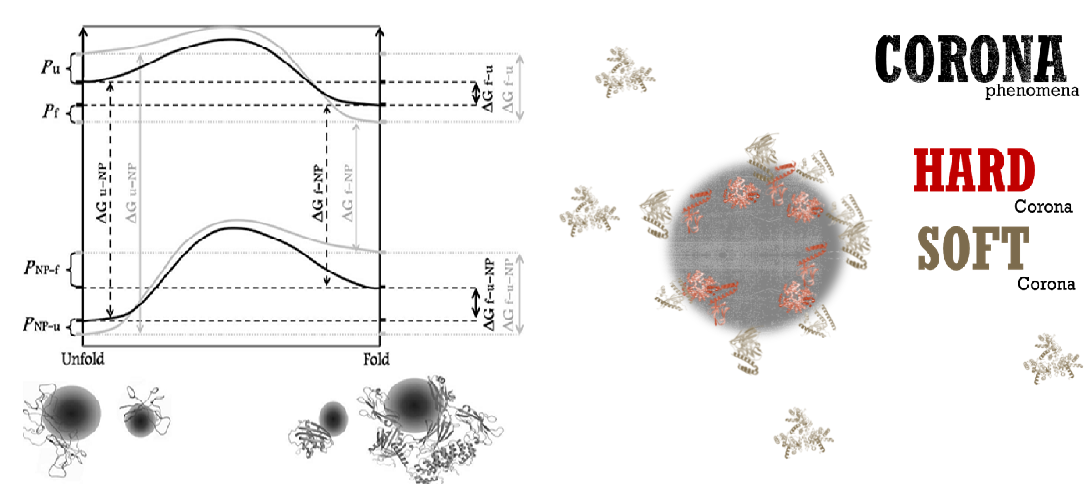(A) Colorimetric Bio-Detection
The colorimetric bio-detection assay is an ultra-sensitive protein detection method based on a color change. It uses the bio-barcode amplification technique for detecting trace amounts of targets with attomolar sensitivity. The nanoparticle-based colorimetric method offers a straightforward approach for identifying biomolecules, important for diagnosing immunodeficiency-related diseases and monitoring environmental pollution.
***************************
(B) Toxicity of Nanoparticles and CORONA phenomenon study
Nanoparticles exhibit toxicity to living organisms and environmental elements (e.g., beneficial soil bacteria). Their mechanisms include cell membrane damage, DNA alterations, and enzyme activation. Widely used in agriculture and plant sciences, nanoparticles undergo various experimental conditions. Our goal is to understand nanoparticle corona formation and its biological impact.
***************************
C) Ultra-High Dilutions basic knowledge and application
Ultra-High Dilutions (UHD) in Plant Science
UHDs have applications in enhancing plant resistance against stressors like drought, salinity, and pathogens. Though the mechanism remains unclear, UHDs influence molecular and chemical responses in plants, which we aim to investigate further to clarify their role in stress mitigation.


